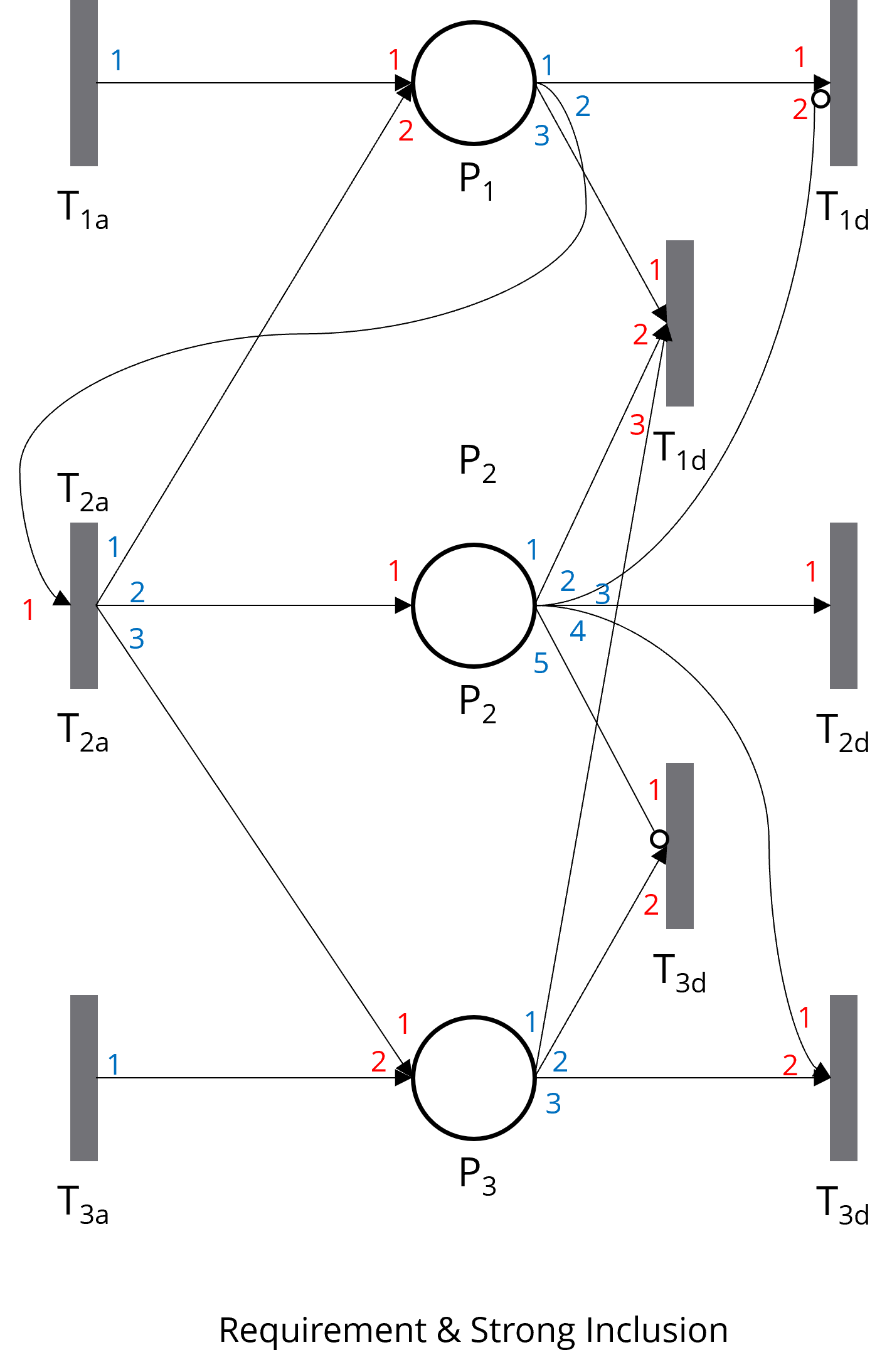III. Context Relationships
In complex systems, components often depend on each other. With CoPN, these relationships could also be reflexed through ingenious design and the use of inhibitor arcs.
1. Weak Inclusion
The activation/deactivation of Source Context (P1) also activates/deactivates Target Context (P2), but Target Context (P2) retains the freedom to activate or deactivate independently.
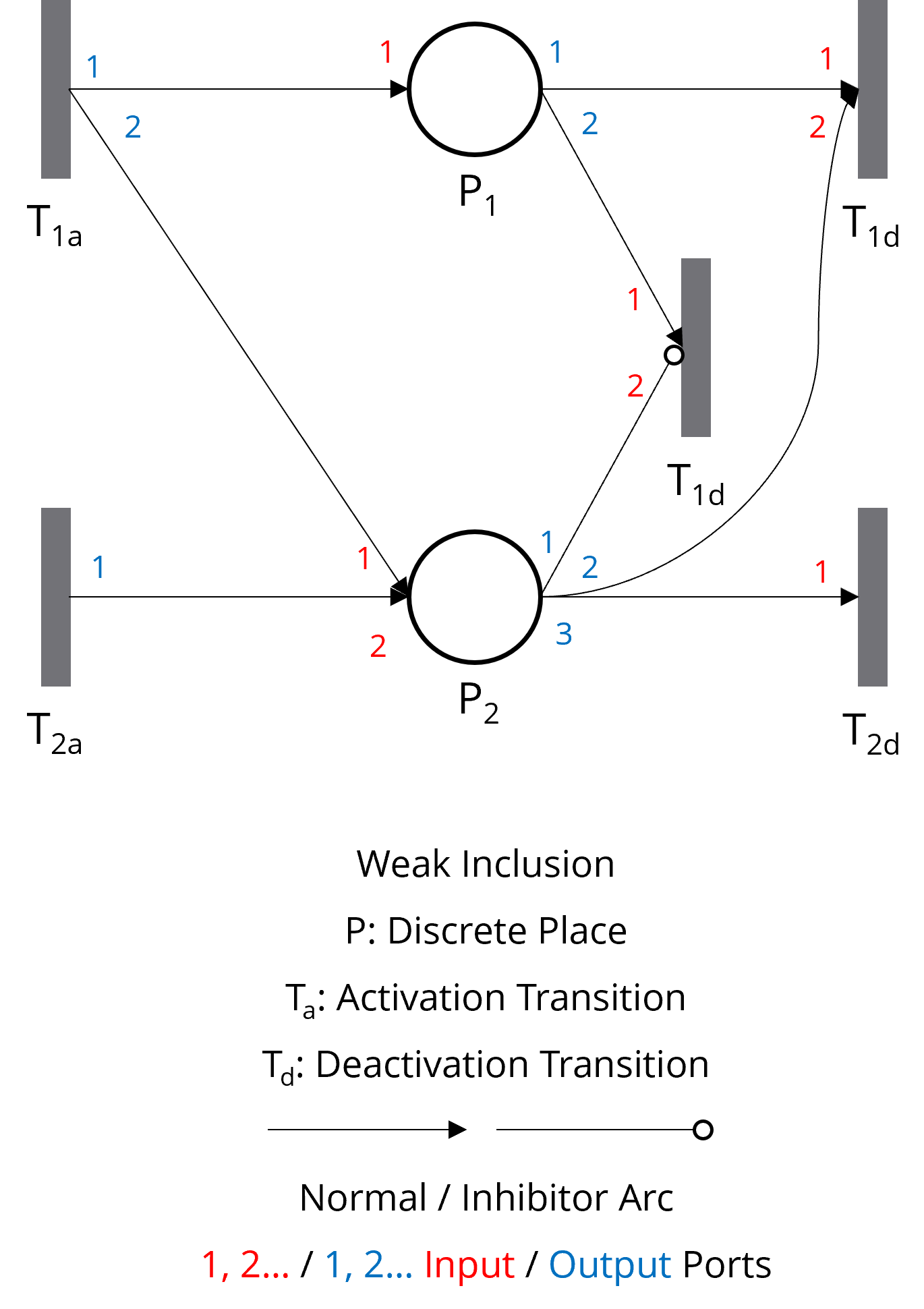
2. Strong Inclusion
The activation/deactivation of Source Context (P1) or Target Context (P2) also activates/deactivates the other, but Target Context (P2) retains the freedom to activate or deactivate independently.
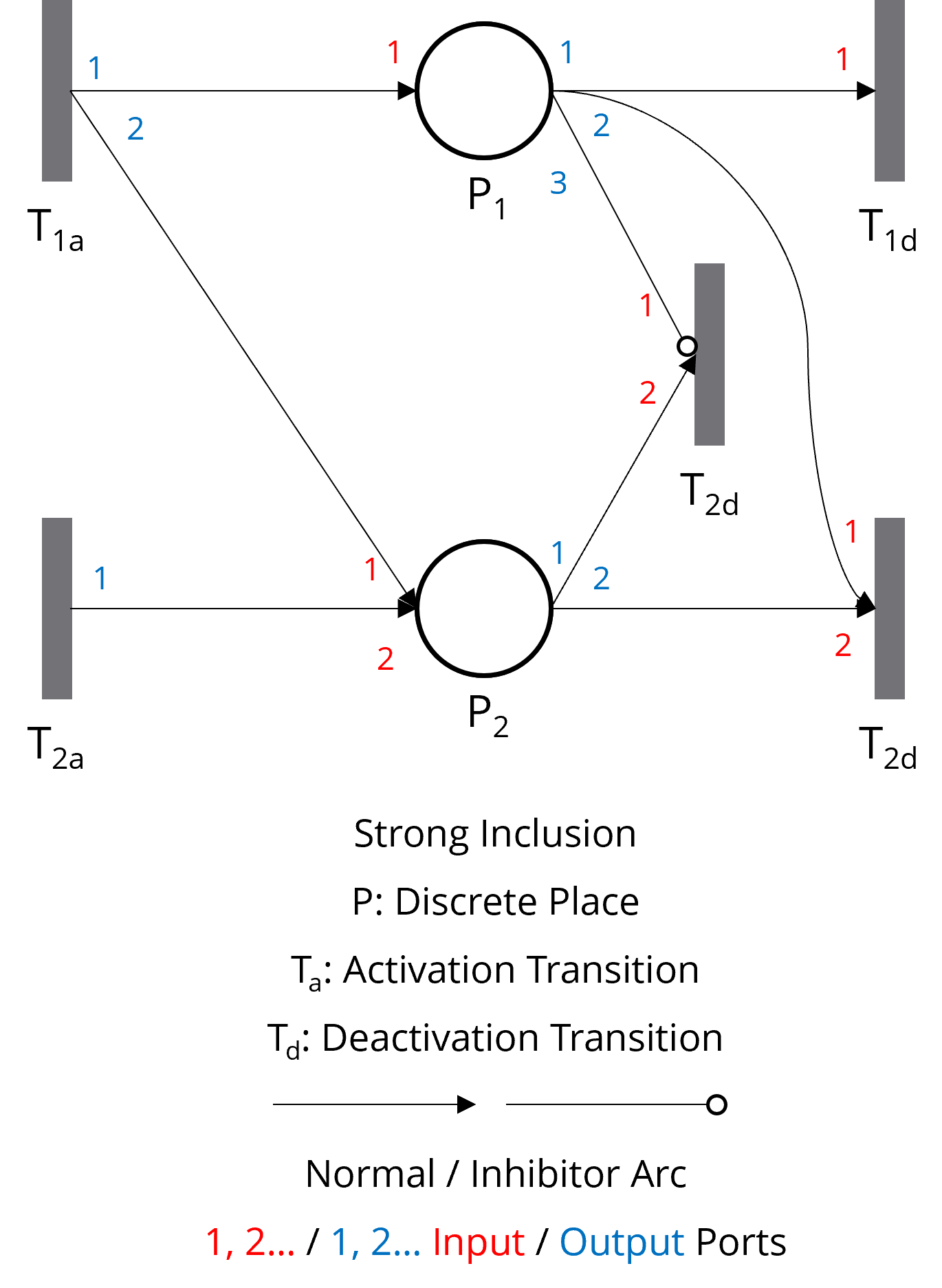
3. Exclusion
Two contexts cannot be active simultaneously, where activating one context will automatically deactivate the other.
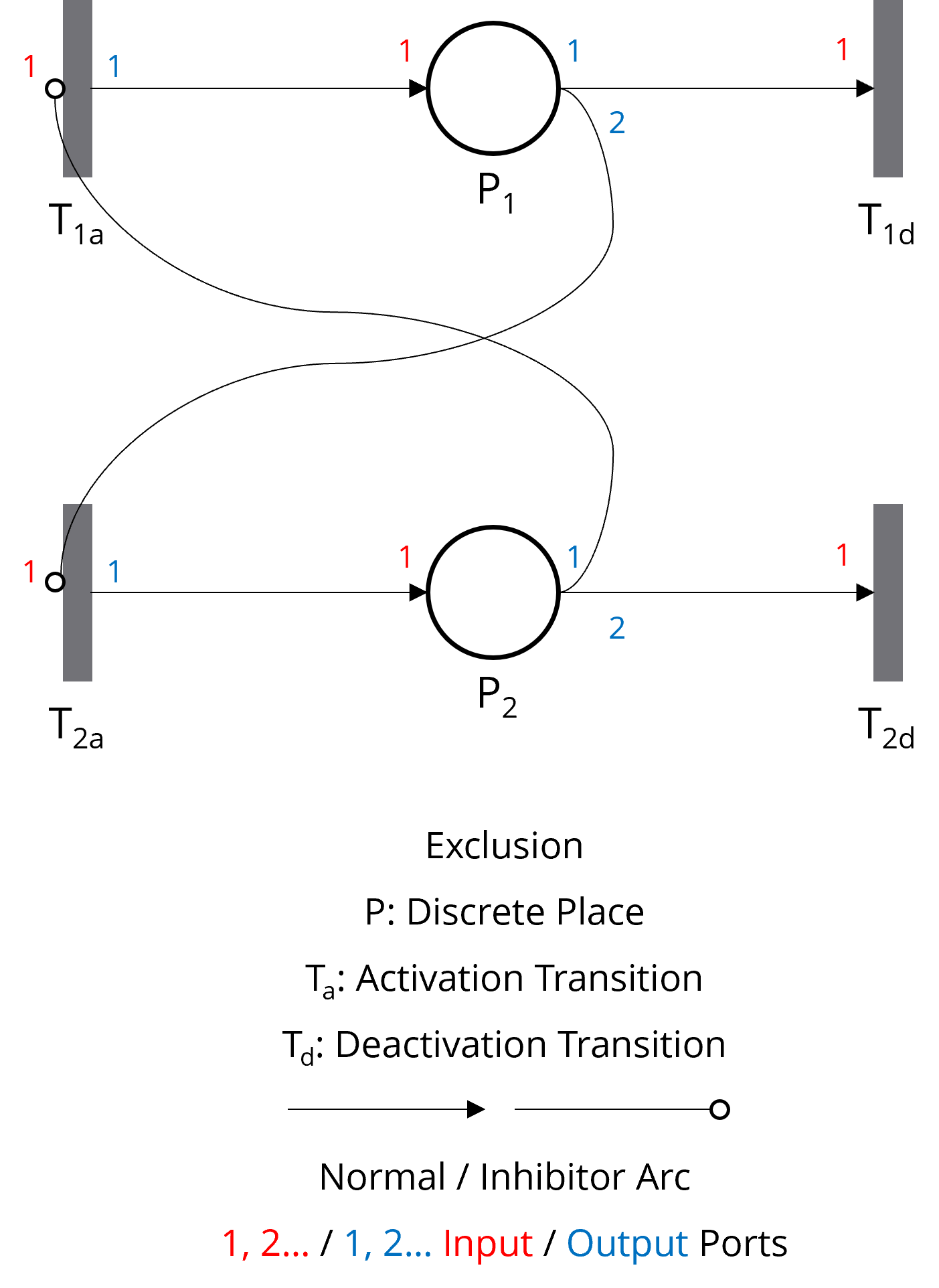
4. Requirement
The activation of Target Context (P2) requires Source Context (P1) to be activated, the deactivation of Source Context (P1) will also deactivate Target Context (P2).
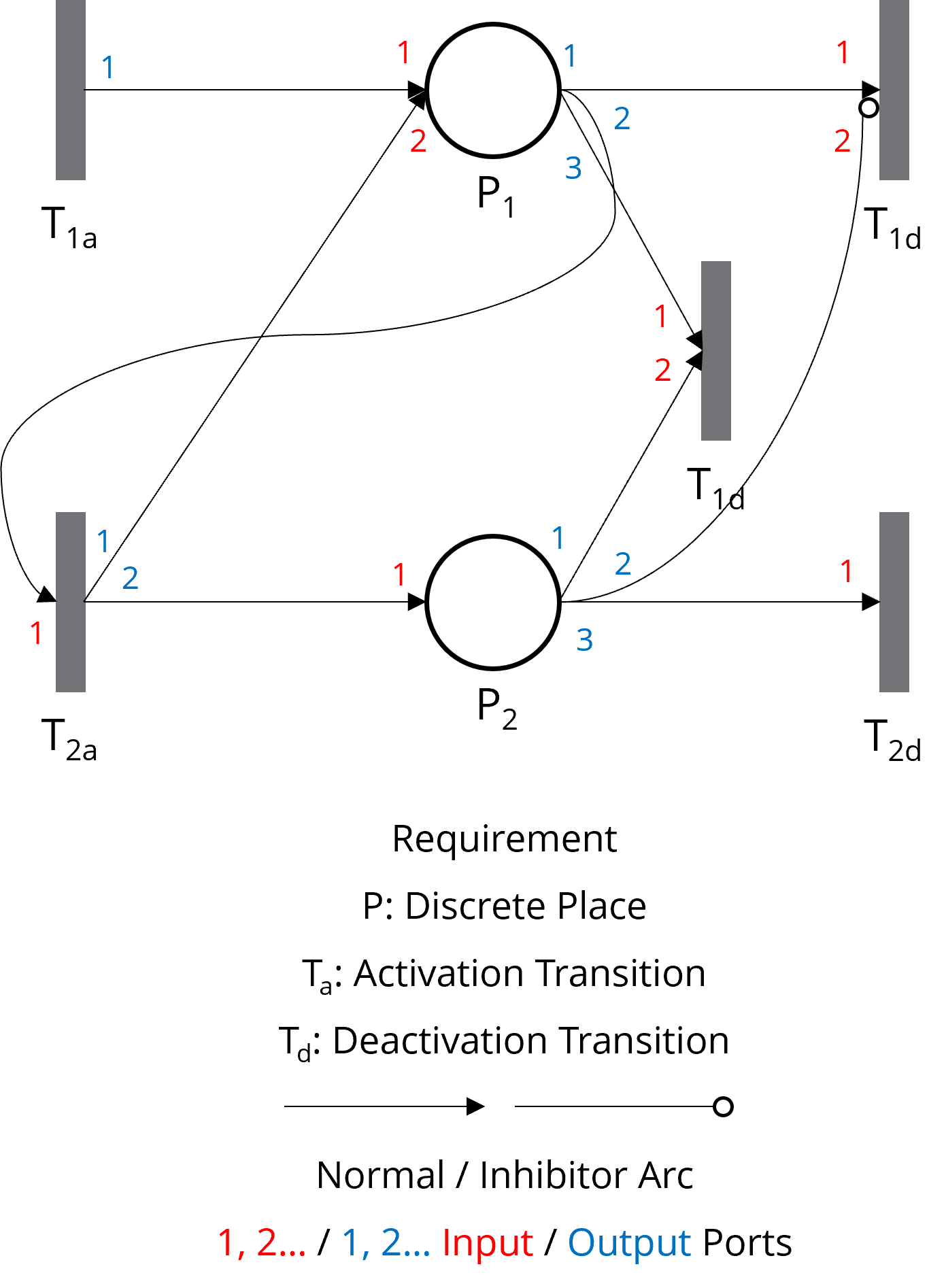
5. Multiple Relationships
By following these principles, multiple relationships can also be defined. In fact, using these approaches, any kind of relationship can be represented.
